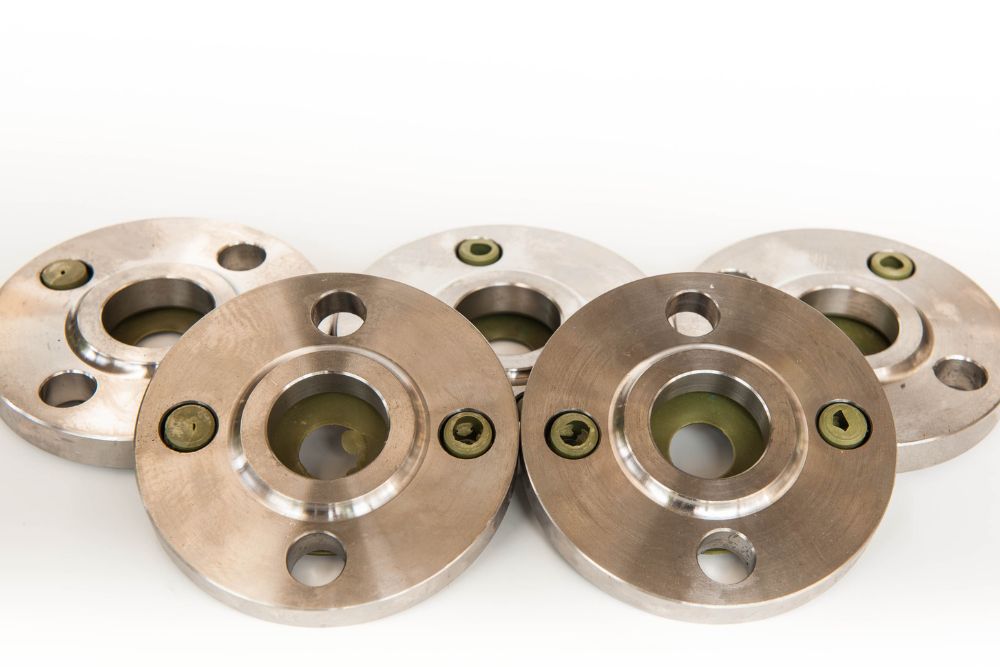ASTM A182 F317L
ASTM A182 F317L Stainless Steel Flange
Emirerri Steel is a leading manufacturer and supplier of ASTM A182 F317L Stainless Steel Flanges, engineered for superior performance in corrosive and high-temperature environments.
F317L (UNS S31703) is a low-carbon version of 317 stainless steel, offering excellent resistance to pitting, crevice corrosion, and intergranular corrosion, even after welding. Its combination of high molybdenum and nickel content enhances resistance to chloride environments and ensures long service life in chemical, marine, and industrial applications.
These flanges are ideal for industries that demand both corrosion resistance and mechanical strength, such as chemical processing, pulp and paper, oil & gas, and marine systems.
Key Features
Low Carbon Content (L Grade): Prevents carbide precipitation during welding.
Superior Corrosion Resistance: Enhanced molybdenum content protects against chlorides and acids.
Excellent Weldability and Fabrication Properties.
Resistant to Pitting, Crevice Corrosion, and Stress Corrosion Cracking.
High Strength and Durability under both ambient and elevated temperatures.
Good Oxidation Resistance in continuous service up to 925°C.

Specification
| Standard | Details |
|---|---|
| Product Standard | ASTM A182 / ASME SA182 |
| Grade | F317L |
| UNS Number | S31703 |
| EN / DIN Equivalent | X2CrNiMo18-15-4 / 1.4438 |
| Material Type | Austenitic Stainless Steel |
| Manufacturing Process | Forged / Rolled / Heat Treated |
| Delivery Condition | Solution Annealed |
| Available Forms | Weld Neck, Slip-On, Blind, Socket Weld, Lap Joint, Threaded Flanges |
Equivalent Grades
| Standard | Equivalent Grade |
|---|---|
| UNS | S31703 |
| EN/DIN | 1.4438 |
| BS | 317S12 |
| JIS | SUS 317L |
| AFNOR | Z3CND19-15-04 |
Available Sizes
| Type of Flange | Size Range |
|---|---|
| Weld Neck (WN) | ½” to 48” (Class 150 – 2500) |
| Slip-On (SO) | ½” to 48” |
| Socket Weld (SW) | ½” to 4” |
| Blind (BL) | ½” to 48” |
| Lap Joint (LJ) | ½” to 48” |
| Threaded (TH) | ½” to 4” |
Chemical Composition
| Element | Percentage (%) |
|---|---|
| Carbon (C) | 0.03 max |
| Manganese (Mn) | 2.00 max |
| Silicon (Si) | 1.00 max |
| Chromium (Cr) | 18.00 – 20.00 |
| Nickel (Ni) | 11.00 – 15.00 |
| Molybdenum (Mo) | 3.00 – 4.00 |
| Phosphorus (P) | 0.045 max |
| Sulfur (S) | 0.03 max |
| Nitrogen (N) | 0.10 max |
| Iron (Fe) | Balance |
Mechanical Properties
| Property | Value |
|---|---|
| Tensile Strength (MPa) | 515 min |
| Yield Strength (MPa) | 205 min |
| Elongation (%) | 35 min |
| Hardness (Brinell) | 217 max |
| Modulus of Elasticity (GPa) | 193 |
Physical Properties
| Property | Value |
|---|---|
| Density | 7.9 g/cm³ |
| Melting Point | 1370 – 1395°C |
| Thermal Conductivity (at 100°C) | 16.3 W/m·K |
| Electrical Resistivity (20°C) | 0.74 µΩ·m |
| Coefficient of Expansion (20–100°C) | 16.0 µm/m·°C |
Types of F317L Stainless Steel Flanges
Weld Neck Flanges (WN)
Slip-On Flanges (SO)
Socket Weld Flanges (SW)
Blind Flanges (BL)
Lap Joint Flanges (LJ)
Threaded Flanges (TH)
Custom Forged Flanges
Corrosion Resistance
ASTM A182 F317L flanges provide superior resistance to general and localized corrosion due to the presence of molybdenum and low carbon content.
They exhibit outstanding resistance to acidic, chloride, and marine environments, as well as stress corrosion cracking and intergranular corrosion after welding or exposure to high temperatures.
Heat Resistance
Excellent oxidation resistance in intermittent service up to 870°C and continuous service up to 925°C.
Retains mechanical integrity and scaling resistance at elevated temperatures.
Heat Treatment
Solution Annealing: 1010–1120°C, followed by rapid cooling in water or air.
No post-weld heat treatment is typically required for corrosion resistance recovery.
Welding
F317L stainless steel can be welded using all conventional methods such as TIG, MIG, and SMAW.
Recommended Filler Metals: ER317L, E317L.
Preheating is not necessary, and post-weld annealing is not generally required due to its low carbon composition.
Fabrication
Cold Working: Easily formed and fabricated with conventional tools.
Hot Working: Performed between 950°C–1200°C, followed by rapid cooling.
Machinability: Similar to other austenitic stainless steels, requiring slower speeds and proper lubrication.
Applications
Chemical & Petrochemical Processing Plants
Marine & Offshore Engineering
Pulp & Paper Industry
Pharmaceutical and Food Processing Equipment
Heat Exchangers and Condensers
Desalination Plants and Seawater Equipment
Oil & Gas Processing Systems
